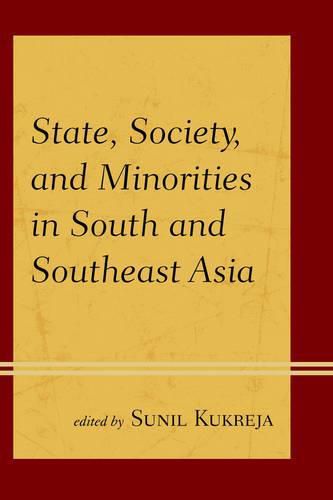Readings Newsletter
Become a Readings Member to make your shopping experience even easier.
Sign in or sign up for free!
You’re not far away from qualifying for FREE standard shipping within Australia
You’ve qualified for FREE standard shipping within Australia
The cart is loading…






South and Southeast Asia continue to be extremely critical regions, deeply intertwined and bound in many ways by centuries of intersecting histories. As the recent experiences of rapid and transformative political and economic changes in several countries in these two regions illustrate, these changes have significant bearing on and are simultaneously affected by the legacy and continued dynamic of dominant-minority group relations. To be sure, while the dynamics of dominant-minority relations in each country are distinct and often mitigated by distinct historical conditions, the phenomenon of these dominant-minority relations, especially along ethnic and religious fault lines, are deeply consequential to many of the nations in these regions. This book, featuring eight case studies, provides a multidisciplinary and multi-layered assessment of the salience of the ethnic and religious realities in shaping various South and Southeast Asian nations. Featuring chapters on Afghanistan, Bangladesh, India, Sri Lanka, Cambodia, Thailand, Malaysia, and Indonesia, this volume provides a deep appreciation of the challenges that these societies confront in integrating and/or responding to specific ethnic and/or religious based conflicts and tensions.
$9.00 standard shipping within Australia
FREE standard shipping within Australia for orders over $100.00
Express & International shipping calculated at checkout
South and Southeast Asia continue to be extremely critical regions, deeply intertwined and bound in many ways by centuries of intersecting histories. As the recent experiences of rapid and transformative political and economic changes in several countries in these two regions illustrate, these changes have significant bearing on and are simultaneously affected by the legacy and continued dynamic of dominant-minority group relations. To be sure, while the dynamics of dominant-minority relations in each country are distinct and often mitigated by distinct historical conditions, the phenomenon of these dominant-minority relations, especially along ethnic and religious fault lines, are deeply consequential to many of the nations in these regions. This book, featuring eight case studies, provides a multidisciplinary and multi-layered assessment of the salience of the ethnic and religious realities in shaping various South and Southeast Asian nations. Featuring chapters on Afghanistan, Bangladesh, India, Sri Lanka, Cambodia, Thailand, Malaysia, and Indonesia, this volume provides a deep appreciation of the challenges that these societies confront in integrating and/or responding to specific ethnic and/or religious based conflicts and tensions.